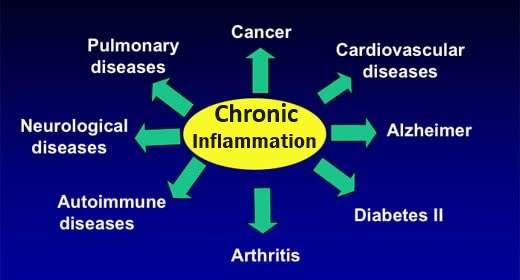Hormone menubar
Estrogens - The Female Hormones
ESTROGEN DOMINANCE - How to Reduce Estrogen in the Body
(2)
Inhibit estrogen production to reduce estrogen
levels in the body
aromatase ▼
enzyme
The
aromatase enzyme is required to facilitate the
conversion of
TESTOSTERONE
or ANDROSTENEDIONE
to estrogen
in the
ovaries of reproductive age
women , male testes,
or adipose tissue from older or obese men or
women .
Reducing body fat decreases
aromatase
▼
production by adipose
tissue
Aromatase- inhibiting ▼
foods:
• Fruits: Berries, citrus fruits, pears, pineapples,
grapes, melons, figs, pomegranates, but NOT apples, cherries, dates
• Vegetables:
Green beans, squashes, onions
• Grains: millet, corn, tapioca, rice, flour
Increasing body's
PROGESTERONE
inhibits
▼
the transcription of the
aromatase
gene. By
interaction with the glucocorticoid receptor in adipose tissue in a
dose-dependent manner. The absence of PROGESTERONE receptors in adipose fibroblasts enables
PROGESTERONE to inhibit glucocorticoid-dependent
aromatase induction. It is proposed that it
is a suppressor of aromatase
induction in adipose tissue in premenopausal women .
Schmidt M, et al,
PROGESTERONE inhibits glucocorticoid-dependent aromatase induction in human
adipose fibroblasts, J. of Endocrinology, 1998
Zinc. A
natural aromatase
inhibitor
▼
Pomegranate. Ellagitannins ( Ellagic
acid) found in pomegranates inhibit
aromatase;
U rolithin B, a metabolite produced from ellagic acid, significantly
inhibited cell growth in estrogen -responsive
cancers.
Flavones and Isoflavones.
Shown to be aromatase inhibitors;
- White Button Mushrooms
Grube, Baiba J, White button mushroom
phytochemicals inhibit aromatase activity and breast cancer cell proliferation.
J. of Nutr., 2001;
Chen S et al,
Anti-aromatase activity of phytochemicals in white button mushrooms (Agaricus
bisporus)", Cancer Res. ,2006
- Chrysin + Piperine.
Chrysin is a non-estrogenic flavone derived
from the Passiflora plant (passion flower) and found in honeycomb in small
amounts, has not proved to be an effective aromatase inhibitor when taken
(orally) alone. A 1999 study [Biochemical Pharmacology, 1999, Vol.58] identified chrysin's poor absorption in the bloodstream. However, pilot studies
have found that when chrysin is combined with piperine, reductions in serum
ESTRADIOL and increases in total and free
TESTOSTERONE result in 30 days.
- Luteolin.
Most often
found in leaves, but also in celery, thyme, green pepper, perilla, chamomile
tea, carrots, olive oil, peppermint, rosemary, oregano, dandelion, rinds,barks, clover blossom and ragweed pollen. Also isolated from
Salvia tomentosa .
- Kaempferol.
Natural
flavonoid has been isolated from tea, broccoli, Brussels and apples; extracted
from delphinium, witch-hazel and grapefruit, but requires high concentration
for anti-aromatase effect not likely achieved except via extraction.
- Quercetin.
In red wine,
aromatase;
- Soy isoflavones.
Specifically genistein and daidzen are known to be potent
aromatase inhibitors. Soy isoflavones
at moderate doses are mildly estrogenic by
binding to the ESTRADIOL receptors in the
tissues and thus blocking ESTRADIOL (the more
potent estrogen
hormone). Also, soy isoflavone
supplementation was shown to significantly increase sex hormone binding globulin
(SHBG, the protein that binds /inactivates estrogen
in the blood) in postmenopausal women with low initial SHBG levels, thereby
reducing free estrogen .
Dietary Isoflavones Affect SHBG Levels in Postmenopausal Women, Pino AM et al,
J. Clin. Endocrinol. Metab. 2000 85: 2797-2800, doi: 10.1210/jc.85.8.2797
However,
HIGH soy isoflavone intake will have an estrogenic effect and researchers
From the
University of Illinois, Virginia Polytechnic and State University and the
National Center for Toxicological Research, article in the journal
Carcinogenesis found that when patients taking a drug used against
estrogen-dependent breast cancer also took
genistein, it reduced the effectiveness of the drug.
i.e. tumors began to grow again, growing
fastest at the highest doses of genistein.
- Combination of Citrus
bioflavonoids + Soy Flavones.
Experiments conducted in Italy have shown that
combining citrus bioflavonoids with soy flavones creates a more powerful defense
against estrogen than taking soy flavones or
citrus flavonoids alone.Citrus flavonoids are abundant in the white, spongy
layer of citrus peels.
Flaxseed lignans may be anti- aromatase.
Flaxseed lignans are found in the fibrous part of flaxseed, and according to Udo
Erasmus phD, a leading expert on fats, they
contain anti-estrogenic
properties estrogen receptors, or by blocking the
aromatase enzyme as well.However,
lignans have shown positive results as a natural aid against
estrogen -related problems.The best,
natural source of flaxseed lignans is ground flaxseed (i.e. flaxmeal).
Stinging nettle
(extract) is
anti- aromatase :
- Aphrodisiac effect on men
by increasing the level of free
TESTOSTERONE in the blood.
Contain compounds that bind to SHBG, reducing the binding of
TESTOSTERONE
to SHBG;
- Blocks binding of
growth-stimulating
Estrogen
to prostate cells.
Useful in treating benign prostatic hypertrophy (BPH);
- Natural aid for women who
suffer from
Estrogen -related
stubborn fat.
Drugs.
Aramidex
Resveratrol.
A partial ER agonist (i.e. activates ER receptors), and yet acts as an ER
antagonist in the presence of estrogen
leading to inhibition of human breast cancer cells.
Increase MELATONIN
levels
One of MELATONIN's roles is the
reduction
of
estrogen
production in the
body. Probably also reduces the number of estrogen
receptors (ERs). MELATONIN is produced
in total darkness (usually during sleep) and is significantly reduced by
excessive exposure to light (including late night TV viewing).
MELATONIN
Avoid Boron Supplements
Supplementing boron raises estrogen levels.
Even at the typical supplementation dose level of 3mg, boron can increase
estrogen production in the body. High levels
of boron also affect the absorption of calcium, magnesium, and phosphorus.
Collins, J. 2000. What's your
menopause type? Prima Health, Roseville,
Calif.

